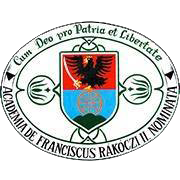Please use this identifier to cite or link to this item:
https://dspace.kmf.uz.ua/jspui/handle/123456789/2120Full metadata record
| DC Field | Value | Language |
|---|---|---|
| dc.contributor.author | Бартфоі Ендре Дєрдь | uk |
| dc.contributor.author | Bártfai Endre György | hu |
| dc.contributor.author | Шаш Еники | uk |
| dc.contributor.author | Sass Enikő | hu |
| dc.date.accessioned | 2023-02-23T07:31:58Z | - |
| dc.date.available | 2023-02-23T07:31:58Z | - |
| dc.date.issued | 2016 | - |
| dc.identifier.citation | In Limes: a II. Rákóczi Ferenc Kárpátaljai Magyar Főiskola tudományos évkönyve. 2016. III. évfolyam. pp. 269-280. | en |
| dc.identifier.issn | 2411-4081 | - |
| dc.identifier.uri | http://dspace.kmf.uz.ua:8080/jspui/handle/123456789/2120 | - |
| dc.description | https://kmf.uz.ua/wp-content/uploads/2017/03/Limes2016_netre.pdf | en |
| dc.description | https://opac3.brff.monguz.hu:443/hu/record/-/record/bibBRF00006463 | en |
| dc.description.abstract | A történelmi Magyarország fürdői világszerte nagy elismertségnek örvendtek a XIX. század vége óta. Budapest mellett vidéken, a Felvidéken, Kárpátalján és Erdélyben is számos városban működtek gyógyfürdők, melyek jelentős része a trianoni szerződés után elszakadt az anyaországtól. A II. világháború előtt a Felvidék és Kárpátalja „hazatért”, és bekapcsolódott a turizmusba. A tanulmány az 1930-as évek végén mutatja be Kárpátalja elismert fürdővárosait, gyógyfürdőit, az ezekhez kapcsolódó szálláshelyi szolgáltatásokat, létesítményeket. Áttekinti a gyógyvizek összetételét, a különböző betegségek gyógyításában kínált lehetőségeit. Vizsgálja annak okait, hogy miért nem fejlődtek az ezt megelőző közel két évtizedben, milyen fejlesztéseket kezdeményeztek a magyar hatóságok a hazai turizmusba való bevonásuk érdekében. | hu |
| dc.description.abstract | Abstract. Since the end of the XIX. century, the baths of the historical Hungary have been appreciated worldwide. Besides Budapest, spas operated in many towns in the Highland (Felvidék), the Transcarpathian (Kárpátalja) region and in Transylvania (Erdély). Most of these were torn away from Hungary after the Trianon Treaty. Before the World War II, the Highland and the Transcarpathian region returned „home”, and joined the domestic tourism of Hungary. This study presents the known and recognized bath towns and spas of the Transcarpathian region and the related lodging facilities and services. It reviews the composition of the healing waters and their potential in curing different diseases. The study analyses the causes of why these facilities and services have not been developed in the last two decades, and what developments were suggested by the Hungarian authorities in order involve them in the domestic tourism. | en |
| dc.language.iso | uk | en |
| dc.publisher | II. Rákóczi Ferenc Kárpátaljai Magyar Főiskola-«RIK-U» Kiadó | en |
| dc.relation.ispartofseries | A II. Rákóczi Ferenc Kárpátaljai Magyar Főiskola tudományos évkönyve;III. évfolyam | - |
| dc.rights | Attribution-NonCommercial-NoDerivs 3.0 United States | * |
| dc.rights.uri | http://creativecommons.org/licenses/by-nc-nd/3.0/us/ | * |
| dc.subject | Kárpátalja | hu |
| dc.subject | gyógyfürdők | hu |
| dc.subject | források | hu |
| dc.subject | szálláshelyek | hu |
| dc.subject | gyógyvizek | hu |
| dc.subject | gyógyvizek összetétele | hu |
| dc.title | Минуле, сьогодення та майбутнє оздоровчого туризму на Закарпатті | en |
| dc.type | dc.type.researchStudy | en |
| Appears in Collections: | Limes Sass Enikő | |
Files in This Item:
| File | Description | Size | Format | |
|---|---|---|---|---|
| Bartfai_E_Gy_Sass_E_Mynule_sohodennia_ta_maibutnie_ozdorovchoho_turyzmu_2016.pdf | In Limes: a II. Rákóczi Ferenc Kárpátaljai Magyar Főiskola tudományos évkönyve. 2016. III. évfolyam. pp. 269-280. | 404.64 kB | Adobe PDF | View/Open |
This item is licensed under a Creative Commons License





